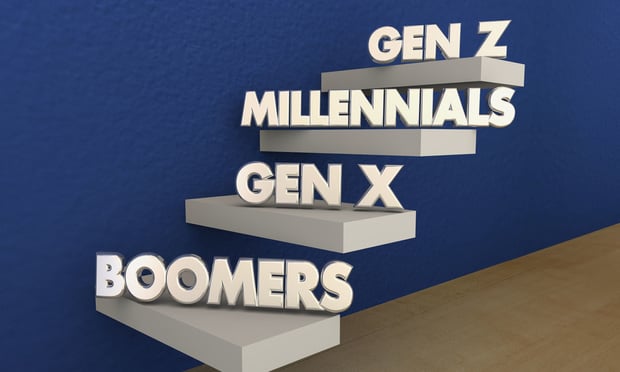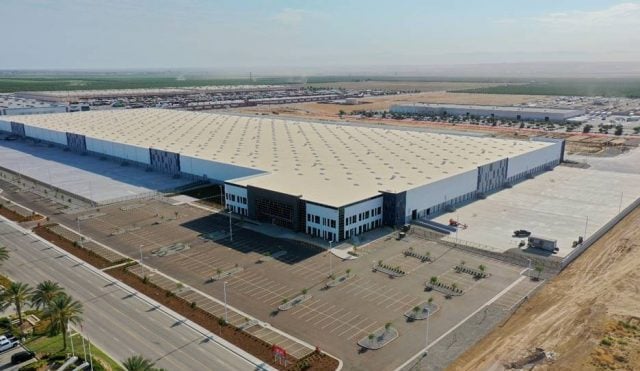SAN DIEGO—There's no disputing the laudable job the the USGBC has done in promoting sustainability through its LEED certification program. However, the program may not serve the larger majority of properties, owners and operators in the commercial real estate industry, and organizations such as IREM are realizing that, Joe Greenblatt, CEO of Sunrise Management and past president of IREM, tells GlobeSt.com exclusively. We spoke with Greenblatt about sustainability, the Millennials and Baby-Boomers, as well as how the multifamily sector will be affected by the growing sustainability movement.
GlobeSt.com: In what ways will Millennials influence the multifamily and senior housing sectors to be green?
Greenblatt: Interestingly, Baby-Boomers still represent the elephant in the room on what will happen in senior housing, but the multifamily sector is being motivated to pursue green practices in a couple of ways. First, there is a fundamental realization that green is typically economically beneficial. If we're conserving resources, whether they're energy or water, in a world where our history and expectation are that resource costs are going to continue to climb—current oil prices notwithstanding—and resources will become scarcer, it makes financial sense to do so. That is driving enthusiasm among the multifamily sector in green technologies. Also, there's a growing demand for green housing in the rental-housing world. Certainly, there's an inclination on the part of young renters to conserve and save money, but there's also a sense of social responsibility. Being green is a part of their lifestyle, whether they're using public transportation or a hybrid or electric vehicle. They're looking for the same level of engagement in their housing.
GlobeSt.com: What impact does sustainability have on property values, development and trading?
Greenblatt: I think you have to break out commercial and residential into two different buckets. The USGBC has done a great job of making green accessible and attractive in an office setting. There's an undeniable value in providing a more environmentally sensitive work environment, and employers have documented better attendance and productivity. That's reflected to some extent in property values. Institutional investors will specify in their literature that their investments are in green properties. In some cases, it's a US benchmark for commercial real estate in terms of LEED Platinum, Gold or Silver, and I think that's pretty well established in property values.
GlobeSt.com: But what about owners or operators who can't afford LEED?
Greenblatt: LEED applies primarily to urban mid- and high-rise office—some suburban, but it tends to be class-A office, and maybe some class-B. But for many operators of older buildings—class-B and –C office, retail and industrial—it doesn't make sense financially to go for LEED certification. And we need to also look at the other half of income properties: multifamily. LEED is addressed primarily in the office space, secondarily to other commercial types and tertiarily to multifamily. The vast majority of inventory, in my experience, doesn't qualify for LEED—there's no viable alternative for the owner or operator.
But one of the programs that I'm involved with and have been since 2013 does address these owners and operators. IREM rolled out a program that's different from LEED. It's not supposed to compete with LEED. The IREM sustainability program is a set of tools that can be used by an operator or virtually anybody and can bring value to a property. We have branded that here at Sunrise as our Ecolife program. It allows us to use the IREM resources to understand what rebates may be available in the various water districts, municipalities and states in which we do business and then to model them: if I do X, what will happen in terms of Y? What are the financial benefits? Those are pretty powerful tools, and they can apply to pretty much any property type. We're using it to differentiate ourselves from our competitors.
LEED applies to a fairly limited group of key and high-profile properties, but the vast majority of inventory out there can take advantage of IREM's sustainability program. We're doing what we can as operators to institute whatever green features we can. This program has appeal in the marketplace and creates a point of differentiation between property A and property B.
GlobeSt.com: Is there a certification program attached to it like LEED has?
Greenblatt: There is a property certification offered. It's also to reach a much broader marketplace of real estate practitioners and bring a toolbox of green or sustainable resources that are relevant to what they do. We have great technologies and practices coming to us, and it matters to tenants. A good example of this type of use is H.G. Fenton's Solara Apartments in Scripps Ranch here in San Diego, which is 100% solar and leased up overnight.
GlobeSt.com: What other changes do you foresee happening in this sector as Baby Boomers become senior-housing residents and Millennials manage and control these properties?
Greenblatt: I see all of those things happening contemporaneously. Millennials are coming into the workplace in increasing numbers, and our colleagues in the real estate management profession are hiring them. They're embracing sustainability and technology, and they're bringing that sensibility to their work. I see that as a real positive. This is a financial incentive that will eventually become a mandate—to operate in a green fashion and to use Energy Star appliances—that's coming to real estate investment and management irrespective of Millennials.
Millennials are embracing this more so than more experienced operators are—that makes sense. But the Baby-Boomers are interesting. The future of senior housing has yet to be written. Everything we know about senior housing and senior living is out of date—it was written by the last generation, and Baby-Boomers aren't going to follow the same script. I don't know if segregated senior housing is the future of senior housing as we know it today, but NMHC data shows that as Baby-Boomers send their kids off to school and out of the home, they are contemplating downsizing and rental as a lifestyle choice. They're approaching retirement and they're cost sensitive. So there again is that economic driver of conserving resources and being attracted to a community that conserves resources and helps you reduce your monthly outlay. That is only going to accelerate as we see more Baby-Boomers who are on fixed incomes and are going to be more cost conscious. They have different decision priorities, and one of those key decisions is affordability: How am I going to stretch my limited income across that timeframe?
© 2025 ALM Global, LLC, All Rights Reserved. Request academic re-use from www.copyright.com. All other uses, submit a request to [email protected]. For more information visit Asset & Logo Licensing.







